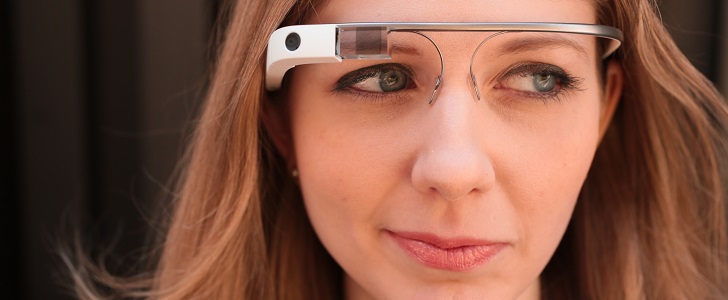No piece of new technology this year has attracted as much interest, controversy, parody, and speculation as Google Glass. Wearable technology like Glass has the potential to enrich our interactions with our environment, help us gather information, and share this information with friends.
Wearing Glass for the past three weeks has provided a variety of positive and negative experiences, ranging from fascinating conversations with people who want to try it on to strange looks and more than a few off-color remarks. Here’s a look at some of the applications for Glass and what we can anticipate in the future.
When people see me wearing Glass
Within the first 96 hours of wearing Google Glass, I was confronted with two very distinct reactions. In the technology haven of San Francisco, I found myself a target of a surprising level of ridicule. To mention just a few of the less-than-pleasant comments:
- “Hey, everyone! That guy has Google Glass on! Let’s make fun of him!”
- “Those are so invasive. I hope you get eye cancer.”
- And, while it wasn’t exactly a comment, it’s worth mentioning that one woman flipped me the double-bird.
On the other hand, once I returned to my home city of Sioux Falls, Iowa (which is not as tech-savvy), I encountered an entirely different response. Reactions were mostly, well, confused:
- “What’s that on your head?”
- “I don’t get it.”
- “Excuse me — are those for a medical condition?”
Based on my experience, the general public’s response to Google Glass — whether positive or negative — seems to be based on a lack of knowledge as to what it is and how it can potentially change our lives.
What Google Glass can do
While the potential for Google Glass has only scratched the surface, a handful of third-party apps are springing up to extend the functionality of Glass. Here’s what it already does well:
Provides recordable, shareable experiences: Google Glass allows me to keep my head up and stay engaged in an experience while capturing it on video or in a photograph that’s easy to share with friends. I’ve found myself snapping interesting photos I wouldn’t have taken with my phone because it’s so convenient. You can even record video and start a Google Hangout with your friends to show them what you’re looking at.
Enables discovery: Google Now offers local discovery potential that displays useful information about the world around you, pointing out restaurants, events, news, and other tidbits. This feature is awesome when traveling to new places, and I expect it will become even more useful as Glass evolves.
4 unexpected ways glass can enrich your life
While I expected Google Glass to provide enhanced experiences, it offered some surprising enrichments:
- It captures action moments. I’ve recorded a softball game; I’ve also used it while playing golf.
- It inspires random conversations. In San Francisco, a man from Tokyo asked if I was using Google Glass. It turned out he was a designer who worked for Samsung.
- It provides directions when needed. The turn-by-turn navigation has been handier than I anticipated. You’d think it would be dangerous or unsafe, but hearing directions without having to look at a phone or screen has been great.
- It acts as a personal fitness coach. I’ve only used it a few times, but a glassware (app for Glass) called Glass Fit shows workouts and gives you timed intervals during your workout for each phase.
What I would like to see Google Glass do in the future
One of the most exciting aspects of Google Glass is that at this early stage in the game, it can be developed to do much more.
Google has placed a ban on facial recognition with Glass to circumvent potential privacy concerns, but as more third-party apps and sites are developed, this will be very difficult to enforce. If this function were linked to my address book, Glass could help me out in situations when I’ve forgotten someone’s name. It could pull people’s data and store their contact information for future reference.
Glass also has the potential to heighten a user’s experience during live events, such as sports or concerts. It could provide highlights and applicable information in real time, allowing you to keep your eyes focused on what’s happening.
Barriers to widespread adoption
The possibilities for the power user are endless, but the reactions I’ve received from the general public indicate that Google Glass will have to become more natural-looking before it enjoys wide acceptance. Glass is already compatible with prescription glasses, and once the technology evolves, it could even be available for contact lenses.
As various wearable technologies meet with a broader base of users, the next step will be to find ways to aggregate the data and use it more effectively. We need to discover methods of normalizing the data, then presenting it visually so people can learn to adapt their habits and thinking. Who knows how far it can help us push both our bodies and minds?
The potential for Glass is exciting, but I don’t see it becoming as widely accepted as iPhones or tablets — at least not in the immediate future. Wearable technologies such as Glass, Nike+ FuelBand, UP by Jawbone, and Fitbit will continue to develop as excellent complements to “home base” mobile devices, but Glass likely won’t be replacing smartphones any time soon.


Oh boy, what this technology will mean for the arts, pirates, bootleggers, the box office, and YouTube!
Wow! San Francisco sounds like a great place! 😉 I am excited to see Glass advance, I see huge potential in the healthcare field. I love your thoughts on game experience when at a professional sporting event. The facial recognition piece seems like it WILL happen. They just need to create some boundaries for the technology.
make it look like normal glasses!